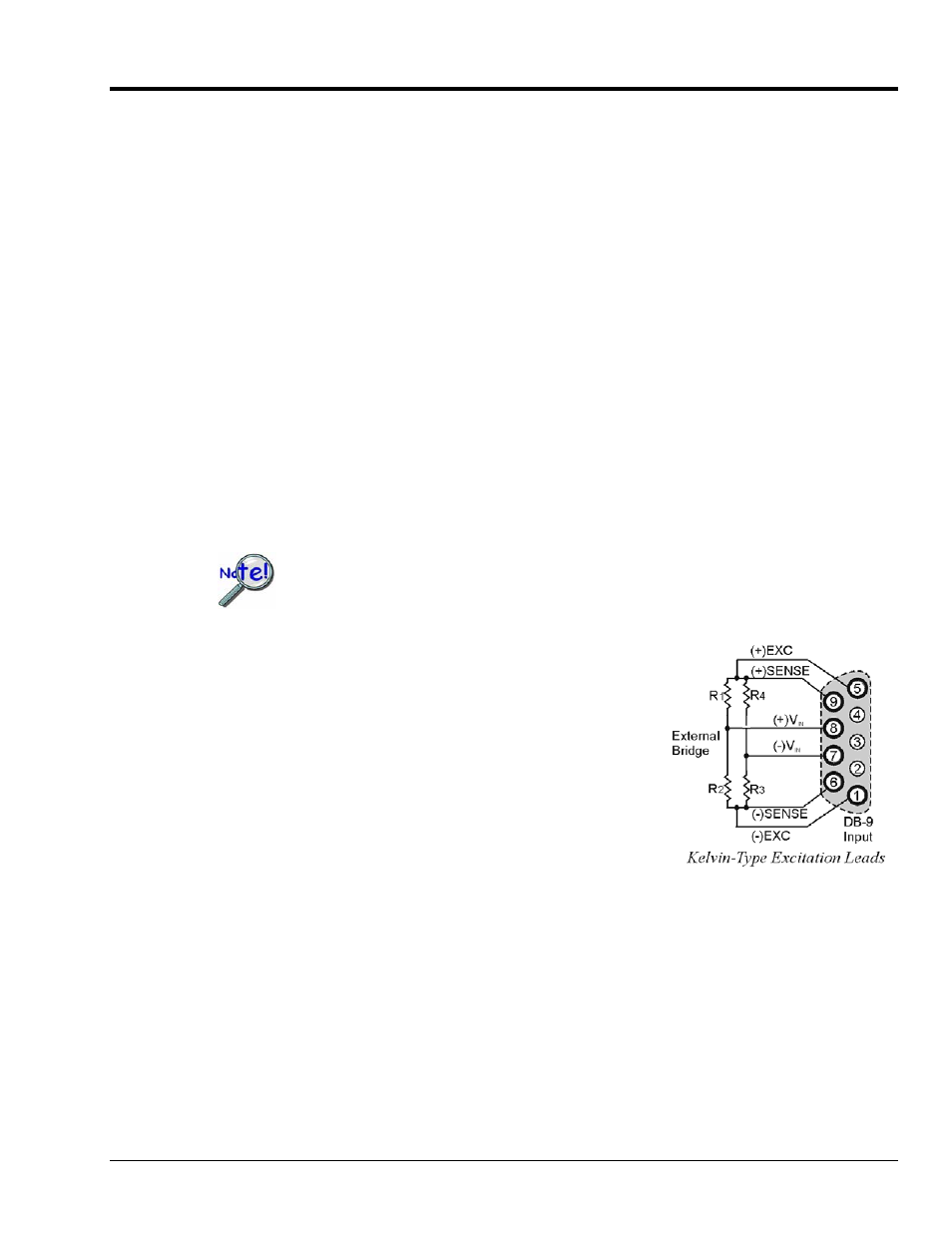Bridge applications – Measurement Computing StrainBook/616 User Manual
Page 67

Bridge Applications
All strain-gage bridge configurations consist of a 4-element network of resistors. The quarter, half or full
designation of a strain gage refers to how many elements in the bridge are strain-variable. A quarter-bridge
has 1 strain-variable element; a half-bridge has 2 strain-variable elements; and a full-bridge has 4 strain-
variable elements.
Full-bridges generally have the highest output and best performance. Output signal polarity is determined
by whether the strain-variable resistance increases or decreases with load, where it is located in the bridge,
and how the amplifier inputs connect to it. Configuration polarity is not important in StrainBook due to an
internal software-selected inversion stage. This simplifies bridge configuration.
Each of the 8 input channels has locations for five bridge-completion resistors. These BCR’s are for use
with quarter and half-bridge strain gages. The resistors make up the fixed values necessary to complete the
4-element bridge design.
A full-bridge gage requires no internal completion resistors. However, the resistors may still be installed
for other configurations in use. The additional resistors will be ignored when the software has selected
full-bridge mode.
Quarter-bridge and half-bridge gages require an internal half-bridge consisting of header positions Rg and
Rh. The recommended minimum values are 0.1%, <5 PPM/°C drift, 1 KΩ, and 0.25-watt resistors. Lower
values will dissipate more power and add heat. Values >1KΩ will increase the amount of drift and noise.
The same value half-bridge resistors can be used for any resistance strain gage. This internal half-bridge
will be automatically selected by the software when needed.
Internal 1 MΩ shunt resistors are used to avoid open circuits.
These resistors are not suitable for high-accuracy/low-noise applications.
A quarter-bridge gage additionally requires a resistor of equal value
to itself. Up to 3 different values may be installed simultaneously in
header positions Ra, Rc, Re. All of these resistors are connected to
the (-) excitation terminal. An external jumper at the input
connector determines which resistor is utilized. Therefore, 3
different quarter-bridge values can be supported without opening
the enclosure. Each different value bridge would simply have the
jumper in a different location; when the gage is plugged in, the
proper resistor is then already selected. Configurations with the
completion resistor on the (+) excitation are redundant, due to the
internal inversion stage, and not used.
The upcoming strain-gage configurations are presented in 4 groups: Full-bridge, half-bridge, quarter-
bridge, and high-gain voltmeter. Many of these configurations can coexist but are shown individually for
clarity.
StrainBook/616 User’s Manual
929494
Bridge Configurations 6-3
